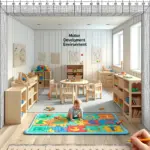Boosting Your Baby’s Gross Motor Skills: Essential Guide to Crawling, Walking, and Growing
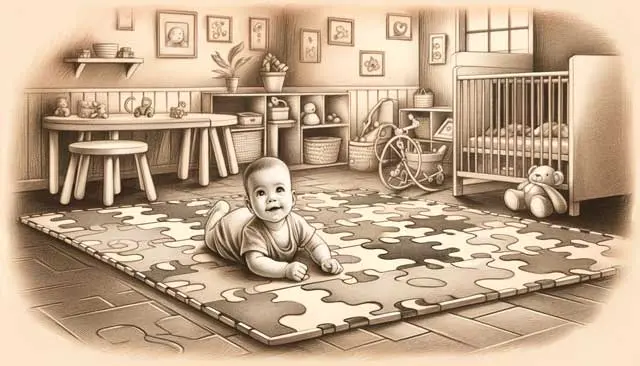
In the grand theater of life, where each of us plays a myriad of roles, there exists no role more profound than that of a mother. She takes her seat in the front row of an intimate auditorium, the stage set for the most captivating play she will ever witness—the unfolding development of her child. This chapter is an ode to her, the spectator with a heart full of love, eyes brimming with pride, and a memory that holds each scene in the highest regard. Discover the essential steps to boost your baby’s gross motor skills for a healthy and happy developmental journey. In this comprehensive guide, we explore proven techniques and practical tips tailored for parents. Learn how to effectively encourage your infant’s crawling and body confidence while also promoting intellectual growth. Join us as we delve into the fascinating world of infant motor development.
The first phase of infant development is crucial for establishing a foundation for gross motor skills. This period is an opportunity to nurture the baby’s archaic reflexes, which play a pivotal role in developing neurological pathways crucial for gross motor functions.
Enhancing Gross Motor Skills: Encouraging Crucial Reflexes and Movements
The first phase of development can be nourished by the solicitation of archaic reflexes which begins to use short-circuit neurological pathways.
automatic walking reflex
Held under the arms, the newborn knows how to stand and is able to imitate walking: this is the automatic walking reflex. You can encourage this reflex in your baby. You will of course not teach him to walk in this way, but encouraging this reflex will allow his nervous system to mature a little so that this reflex disappears and gives way to voluntary movements.
grasp reflex
The grasp reflex, also known as the grasp reflex, is a natural reaction your baby has when the soles of his feet or the palms of his hands are brushed against. When these areas are touched, your baby will tend to close his toes or his hand. More specifically, in the case of the palms of the hands, this reflex can manifest itself by making the baby grab onto your finger.
Regular use of this reflex offers a valuable way to promote the development of the circuits responsible for manual skill and fine motor skills. Maria Montessori, a renowned teacher, believed that the evolution of intelligence was largely through the use and development of the hand. Thus, by soliciting this reflex, you contribute to the maturation of fine motor skills, an essential aspect of intellectual development according to the Montessori doctrine.
asymmetrical tonic neck reflex
If you turn a baby’s head, he will extend his arm to the side he is looking at and flex the opposite arm!
Moro's reflex
A baby suddenly moved or if his head tilts back will suddenly spread his arms and legs then bring them back in a hugging motion. This is Moro’s reflex.
survival reflex
A newborn with his face covered moves his head to remove the sheet that is bothering him. Lying on his stomach, he will try to raise his head to clear his nose.
involuntary movements
During this phase, the infant performs arm and leg movements without involving body movement. These movements remain essentially involuntary.
advent of free motor skills
The work of Hungarian pediatrician Emmi Pikler is now commonly accepted in the scientific community. This pediatrician highlighted the importance of freedom of movement during infant development, as well as the importance of the flat stomach position under active supervision. In fact, it is recommended by pediatric societies to make your baby sleep on his back until he knows how to turn over on his own. That said, it is important that your baby experiences the flat stomach position from birth. In the first phases, he will only strengthen the back muscles supporting his head and upper body, then by dint of being in a flat stomach position he will end up making movements which will ultimately propel him. This discovery can only be made if your child has plenty of opportunity to lie on his stomach. This will be the crawling experience.

Gross Motor Skills Milestones: From Crawling to Walking and Beyond
My son is now eight years old, but I still remember the first time he literally threw his head to the side to manage to turn around. It didn’t seem like a foregone conclusion, as evidenced by his big smile that followed his rollover onto his stomach.
Prolonged tummy time under active supervision is key to motor development. Crawling or alternative movements like rolling and reverse movement are milestones in a baby’s gross motor skill journey. Creating a safe environment where your child can explore these movements is vital for their comfort and confidence in their body.
Contralateral crawl
The contralateral crawl, coordinating the right hand and left foot, is a significant developmental milestone. This coordination is critical for brain development, particularly in connecting the cerebral hemispheres and potentially influencing dyslexia and other developmental challenges.
The sitting position in all this?
Rushing to sitting can be counterproductive. A baby who masters sitting well will quickly move to crawling or hands-and-knees position. Remember, the brain develops through movement, and excessive time in a seated position can hinder this process.
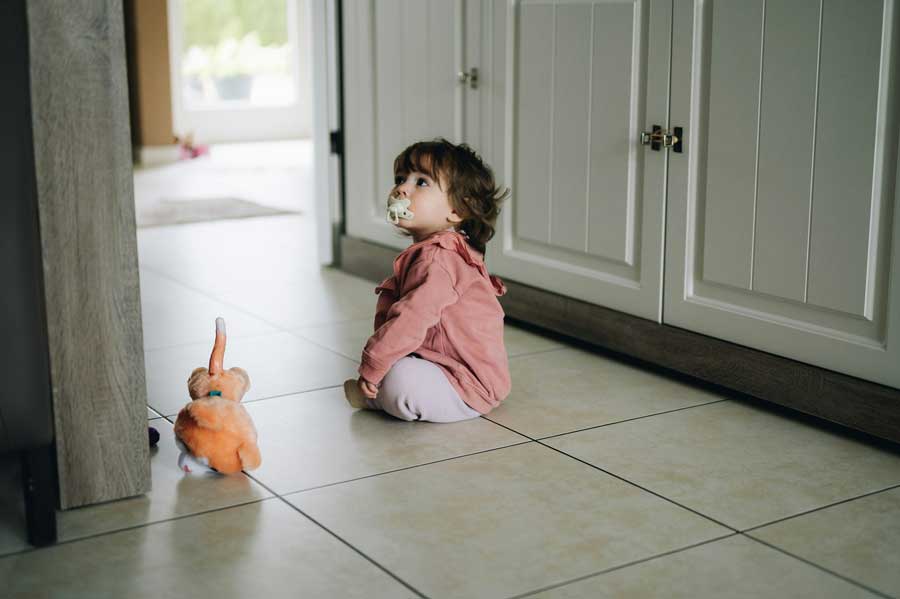
Creeping
Walking on all fours your child becomes more stable on his supports, he then acquires walking on all fours. This acquisition, like the previous one, will culminate in the four legs controlled with coordination of the right hand and left foot. Your child will develop his balance even further. Using crawling and crawling will allow your child to learn how to catch themselves in the event of a fall. During these phases, your child will learn to support himself on his forearms, which is necessary in the event of a fall while walking.
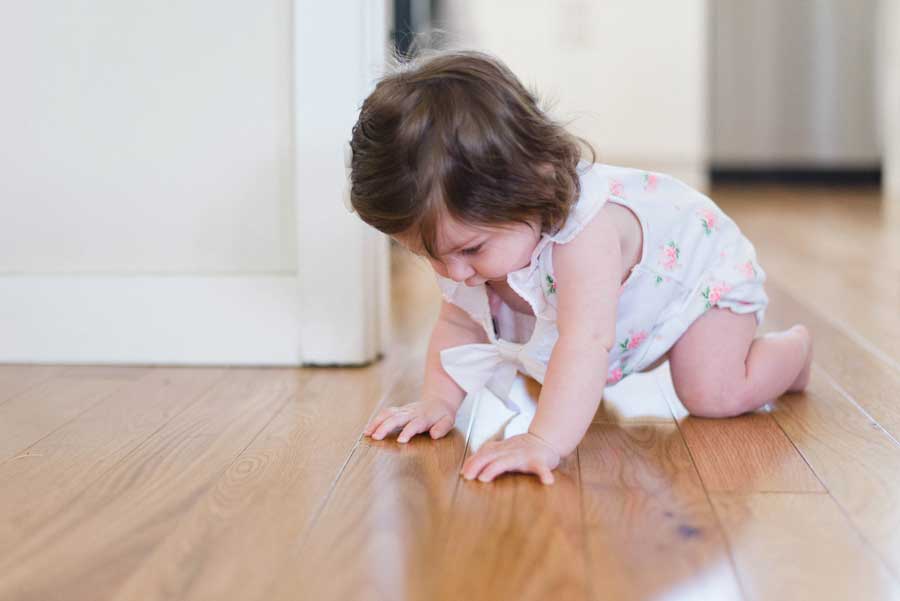
Acquisition of walking
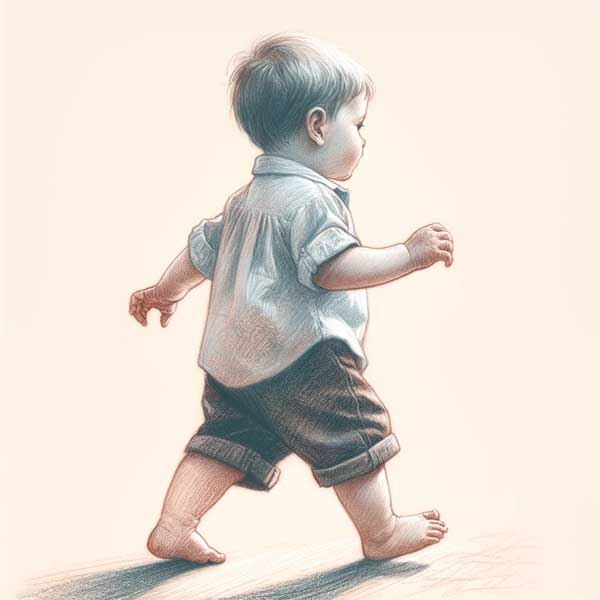
This is probably the phase that most marks the minds of young parents. The age of acquisition of walking often remains in the minds of parents while the age of acquisition of previous stages is often forgotten. Your child walks here using their arms as a balancer to stabilize themselves. This is the first phase of the walk. Using a walker can help here at least in the beginning.
reinforcement of the crawl
You can further reinforce prior milestones by encouraging your child to crawl. Achieve this with a tunnel, which necessitates crawling for your baby to navigate through!
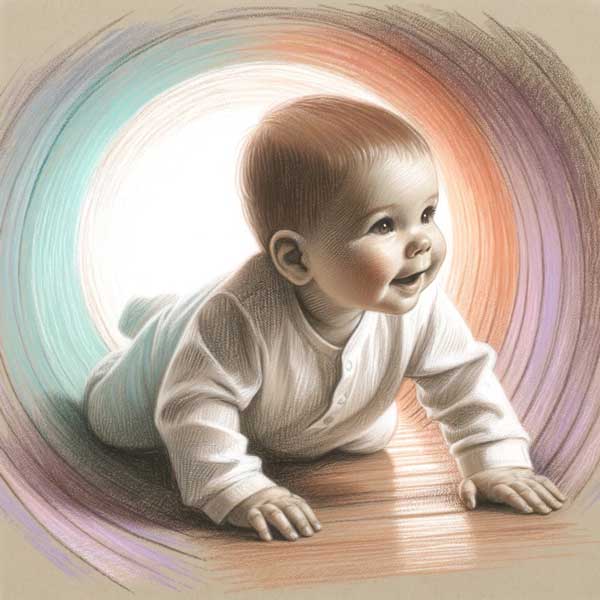
walk with arms free
Your child has been walking for a while with his arms freed from their swinging roles.
contralateral walking and running
Your child now has good gross motor skills and is able to walk or run with upper and lower limb coordination.
The brain develops through sensory experiences and movement. It is now recognized by the scientific community that babies who crawl a lot have fewer dyslexia problems or are less likely to develop developmental pathologies. Infant motor development can be boosted by an appropriate environment. Certain errors should be avoided to advance your baby’s motor development: avoid placing your baby in a constrained sitting position in a deckchair… avoid placing your baby permanently on his back. Regularly offering a flat stomach will be a great help to your baby’s motor development.
Elevate your baby’s cognitive potential by pairing motor milestones with the power of reading—our guide shows you how!
Dive into the fascinating world of Dr. Emmi Pikler, the Hungarian pediatrician whose pioneering work on free movement in infancy has revolutionized our understanding of child development. Visit this post here.


